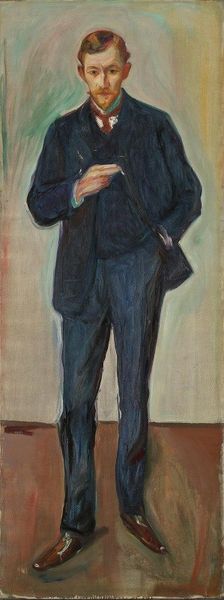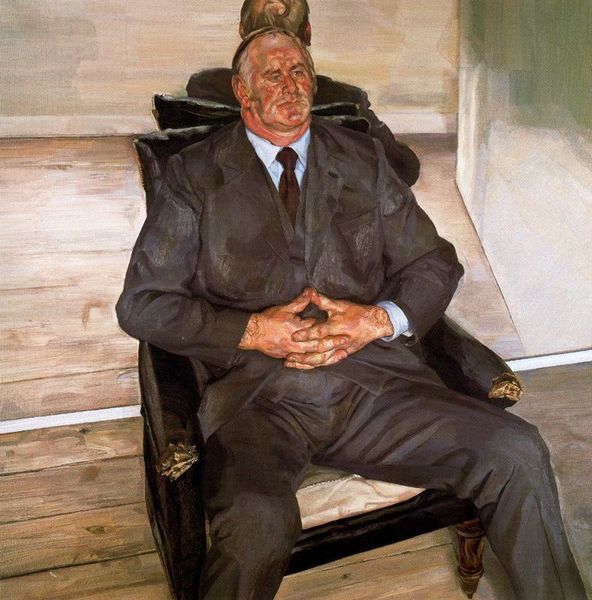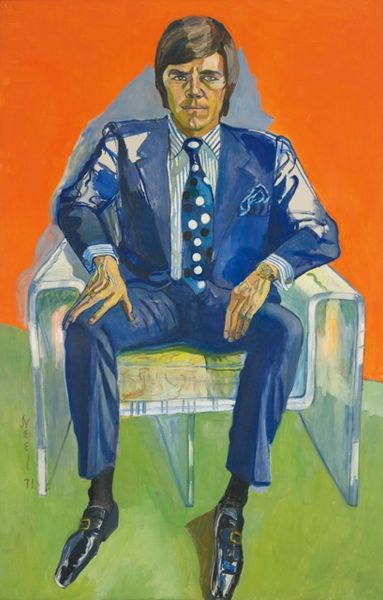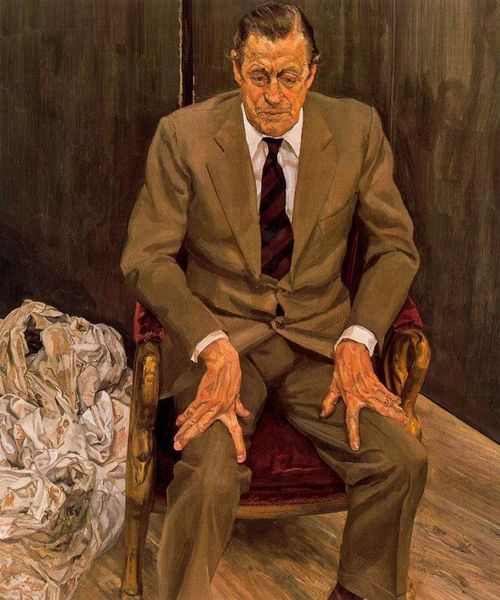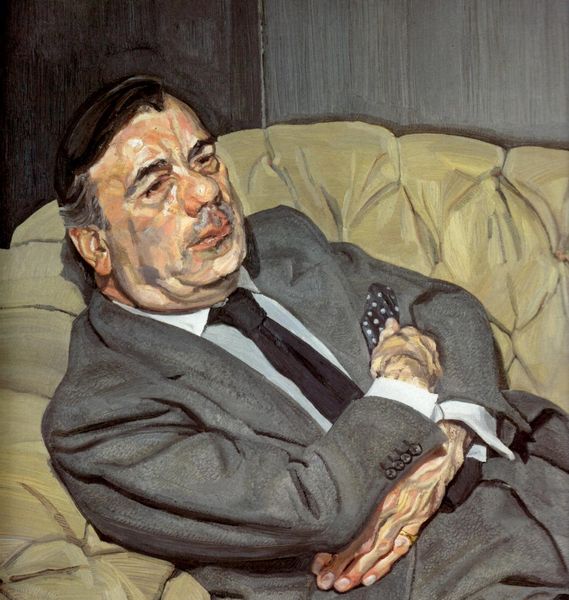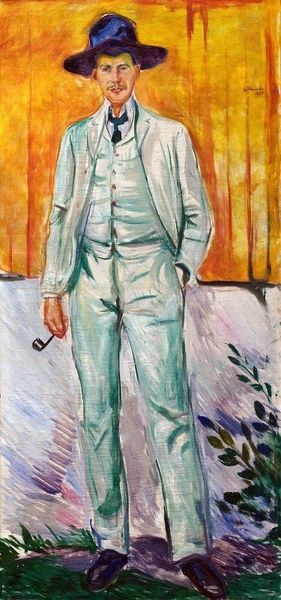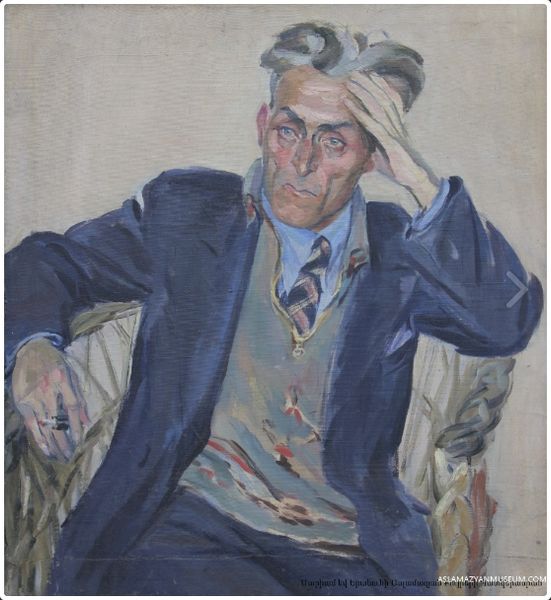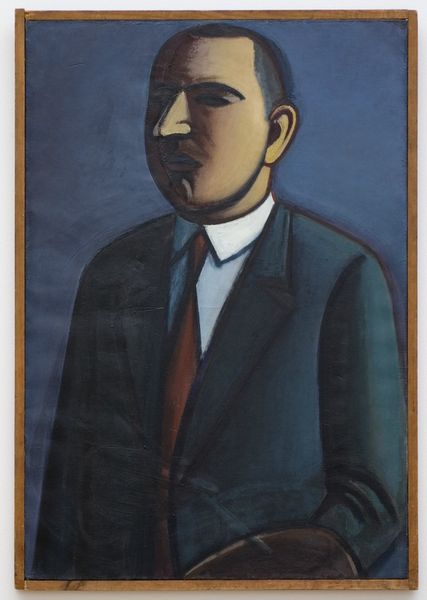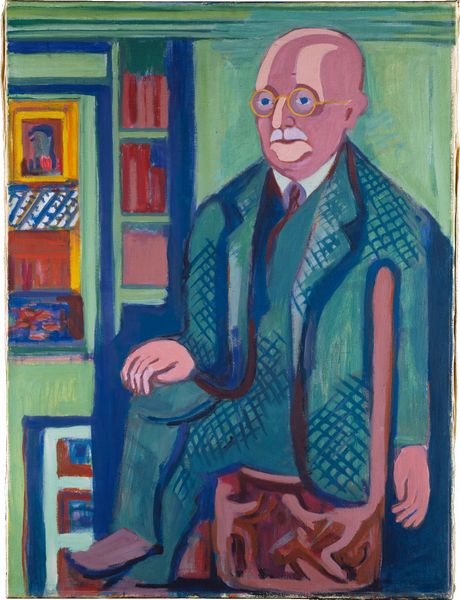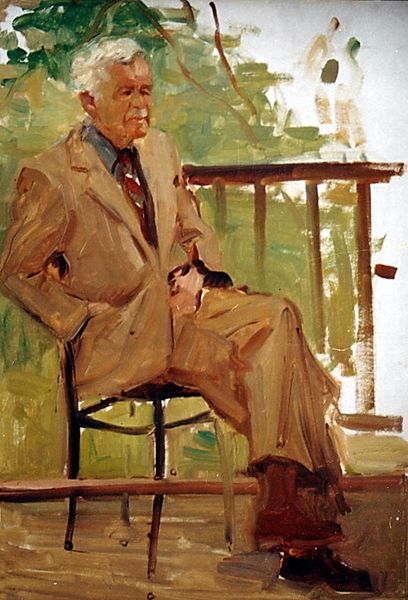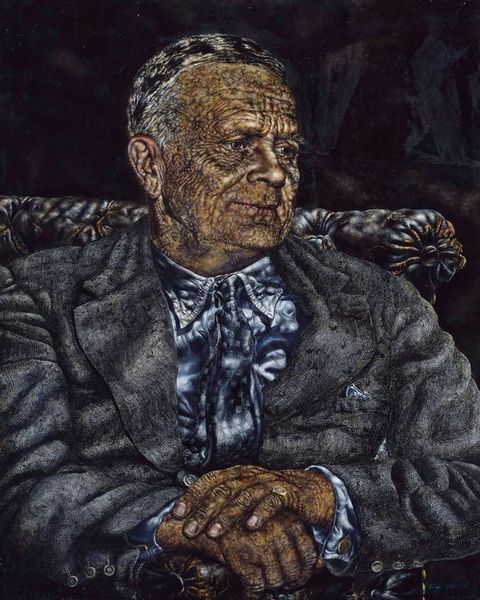
painting, oil-paint
#
portrait
#
painting
#
oil-paint
#
genre-painting
#
modernism
#
regionalism
#
realism
Copyright: Clarence Holbrook Carter,Fair Use
Curator: Clarence Holbrook Carter’s "William Stolte, Ex-Councilman," created in 1932 with oil paint, offers a stark glimpse into civic life during the interwar years. Editor: There's an incredible stillness, almost a sense of suspension about this painting. The palette, subdued except for the shine on the shoes, enhances the feeling of a world put on pause. Curator: Indeed. It speaks volumes about the power dynamics within local governance and reflects the realities of that era. It acknowledges that every figure, even the Ex-Councilman, exists in this structure of meaning and expectation. What does the imagery signify in this cultural tableau? Editor: Well, visually, notice the starkness of the corner where he’s placed. Corners often symbolize being trapped or caught. Then you see his hands, carefully posed. To me they’re the key, representing restraint, possibly reflecting his former position’s restrictions or a longing for something that used to be. And that carefully chosen tie. A reminder of position, power, respectability. Curator: That symbolism is fascinating! When we examine his positioning within the canvas, we start unpacking ideas of political agency and societal roles during a difficult financial period, no less. He represents both privilege and perhaps the loss of it; an examination of how class and status become entangled within the human narrative. How does that stillness impact the larger narrative? Editor: It allows us to ponder themes like the ephemeral nature of power, how symbols of status linger even after the status is gone. Curator: By setting it against that socioeconomic backdrop, Stolte’s personal narrative, made of symbolism and circumstance, reflects bigger truths about American society. Editor: I agree. Seeing him there, framed against the light corner, one senses that the artist has asked us not only to remember the man but the system which elevates some only to demote them later. It echoes even today. Curator: It leaves you to ponder not just Stolte himself, but the broader social structures that framed his world. A very poignant, politically rich composition by Carter. Editor: Exactly. It's about seeing beyond the man, delving into the story woven through time, position, and human nature. A worthwhile reflection, indeed.
Comments
No comments
Be the first to comment and join the conversation on the ultimate creative platform.
